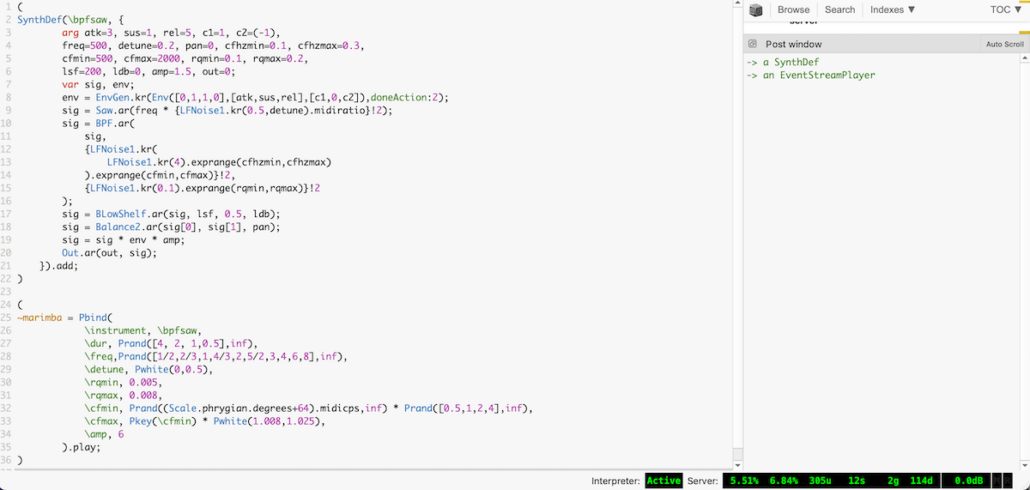[responsivevoice_button voice=”US English Female” buttontext=”Listen to Post”]
I am currently carrying out the artistic research project ‘Performance Machine’ under Danish National Academy of Music. In short, Performance Machine is an attempt at bridging the gap between algorithmic music and a performing musician – a ‘black box’ that takes an input from a musician and generates an output based on this input.
In a very simple sense, a loop pedal can be considered such a black box. But what if instead of simply reproducing the input in a loop, the pedal was more ‘intelligent’? What if it could analyse aspects of the playing like the scales used, recurring patterns, direction of phrases, spacing of notes etc. and use this information to generate synth sounds, loops and patterns? This is what I am after. A feedback loop between man and machine.
Performance Machine is inspired by Brian Eno and his idea of surrendering control. My hope is that Performance Machine will put the musician in a place between full control and no control in a Eno’ish way. Seen from the machine’s point of view, what happens will be mostly deterministic with only limited use of random generators. But – I hope – seen from the human performer’s point a view, what happens will not feel totally deterministic since enough parameters are in play that we as humans cannot predict the outcome of every input.
The challenges are both technical and musical. If you ever dabbled with coding you can probably appreciate the complexity of what I am trying to achieve. Add to this that I started being serious about programming only 6 months ago. However, all these technical difficulties can be overcome, albeit sometimes at a painstakingly slow speed.
The real challenge, I suspect, is of a more musical, almost philosophical character which can be boiled down to this: Is this interesting at all? As you might have guessed, I believe it is, but the real question will be what kind of performances can be achieved. Hopefully they will more than merely ‘interesting’.

I get great help from the Supercollider community in general and from Eli Fieldsteel, who is mentoring the project, in particular. Eli is a skilled programmer and director at University of Illinois Experimental Music Studios. Most of what I know about programming in Supercollider comes from his tutorials.
The first phase of the research project is due by the end of 2021.
Links:
https://www.youtube.com/user/elifieldsteel
